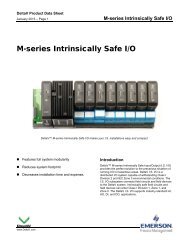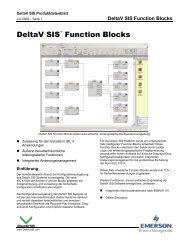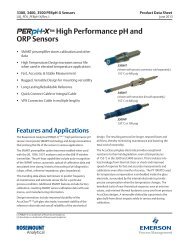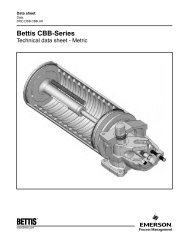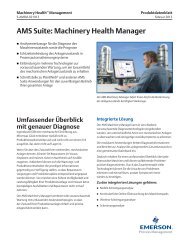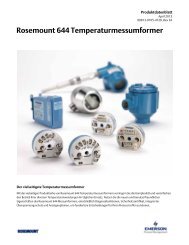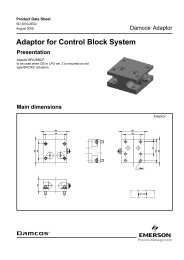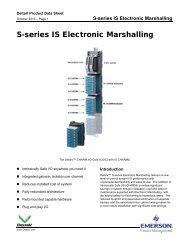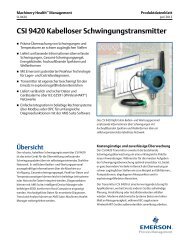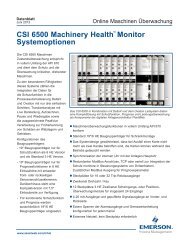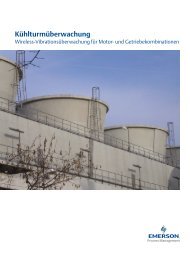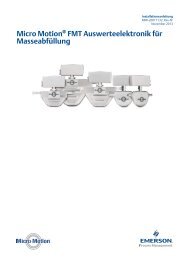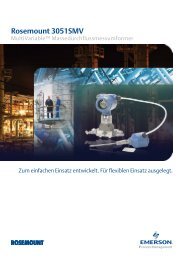DGC Brushless Excitation - Emerson Process Management
DGC Brushless Excitation - Emerson Process Management
DGC Brushless Excitation - Emerson Process Management
Create successful ePaper yourself
Turn your PDF publications into a flip-book with our unique Google optimized e-Paper software.
The design OXP sequence of actions is as follows:<br />
• Field Current exceeds the OXP setpoint:<br />
o Start OXP integrator<br />
o Disable the Base Adjuster Follower<br />
o Initiate a preposition request to the Base Adjuster (optional)<br />
• Wait for a while as:<br />
o Integrator integrates<br />
o Base Adjuster moves to the Full Load value<br />
• Integrator times out:<br />
<strong>DGC</strong> <strong>Brushless</strong> <strong>Excitation</strong><br />
System Description<br />
o If the <strong>DGC</strong> is in AC control or DC control, OXP forces the <strong>DGC</strong> into Forced<br />
mode (Regulator Trip) and then waits for a timeout period (oxp_timeout1)<br />
o Base Adjuster is at the Full Load value of current<br />
• Final action:<br />
o If taking the <strong>DGC</strong> out of AC or DC control lowered the current below the OXP<br />
setpoint; nothing is done, the unit is safe<br />
o If not, OXP initiates Generator Trip contact output. Note that if the <strong>DGC</strong> was<br />
not implementing AC or DC control that OXP will initiate the Generator Trip<br />
contact output immediately.<br />
If at any time during the sequence the field current drops below the OXP setpoint, the sequence is<br />
terminated and the OXP functions are reset.<br />
The OXP integrator is a software function that emulates the heating characteristics of the rotor. The<br />
integrator is started when the Exciter Field Current exceeds the setpoint, typically 110% of rated<br />
field current. The thermal integrator increases with time, proportional to the difference between the<br />
measured field current and the setpoint. During this period, the OXP is said to be “timing” and the<br />
output of the integrator is analogous to the heat buildup in the rotor winding.<br />
Upon starting to integrate, the OXP software disables the Base Adjuster Follower and initiates a<br />
digital output to move the Base Adjuster to a known safe value in preparation for the regulator trip.<br />
The recommended known safe value is the equivalent of 100% rated field current.<br />
When the integrator output value reaches the maximum allowable value, the OXP is said to have<br />
“timed out”. This is the equivalent of the rotor temperature having reached its thermal limit. Upon<br />
timeout OXP takes one of two paths:<br />
1. If the regulator was in AC or DC control, it initiates a regulator trip changing the<br />
<strong>DGC</strong> mode to “Forced”, leaving the <strong>DGC</strong> in manual operation with the Base<br />
Adjuster in control of excitation. This is followed by a configurable time delay<br />
(oxp_timeout1) (usually in the range of 3 to 5 seconds). The reasoning is that<br />
the automatic controller may be contributing to the problem and by forcing<br />
manual control the problem situation would then be alleviated. The time delay<br />
provides a small time period for the correction to take place.<br />
© <strong>Emerson</strong> <strong>Process</strong> <strong>Management</strong> Power & Water Solutions. - 23 -<br />
PWS_005075 [3]



